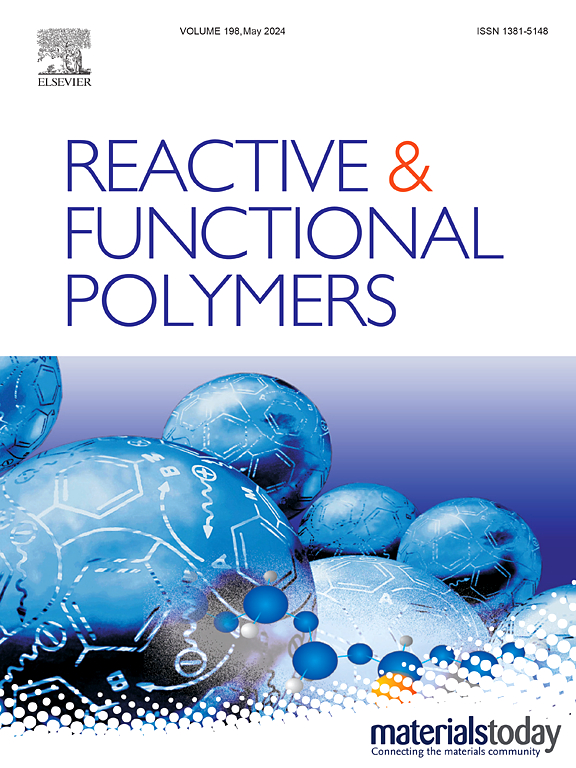Preparation of modified epoxy resin with high hydrophobicity, low dielectric constant, toughness, and flame retardant by epoxy-functionalized siloxanes
IF 4.5
3区 工程技术
Q1 CHEMISTRY, APPLIED
引用次数: 0
Abstract
A series of α, ω-dimethylglycidoxypropyl-terminated PDMS oligomer (PDMS-GE) oligomers with different polymerization degrees were synthesized and used to modify the bisphenol-A diglycidyl ether E51 (DGEBA) / 4,4-diaminodiphenylmethane (DDM) epoxy resin, resulting in epoxy resins with high hydrophobicity, low dielectric constant, good impact toughness, low combustion heat release rate, and low total heat release. The combustion heat release rate and total heat release of the material decreased with the increase in the loadings of PDMS-GE. Relative to pure epoxy resin, the composite E51/D30–10, which using DGEBA as the matrix, PDMS-GE with a degree of polymerization of 30 as the modifier in an amount of 10 phr relative to the mass sum of DGEBA, PDMS-GE and DDM, exhibited the best comprehensive performance with a water contact angle of 102.42°, a dielectric strength of 6.49 kV/mm, a dielectric constant of 2.93 at 14.2 GHz, the peak rate of heat release (PRHR) and total heat release (THR) are of 378.3 kW/m2 and 134.4 MJ/m2, respectively. These comprehensive performances underscore the potential of PDMS-GE oligomers in significantly improving epoxy resin properties. When the loadings of PDMS-GE oligomers are less than 5 wt%, PDMS-GE with a lower degree of polymerization can improve the toughness of epoxy resins. The impact strength of the composite E51/D24–5, which uses DGEBA as the matrix, PDMS-GE with a degree of polymerization of 24 as the modifier in an amount of 5 phr relative to the mass sum of DGEBA, PDMS-GE, and DDM, reaches 98.1 kJ/m2, which is about 28.9 % higher than that of pure epoxy resin. The results also indicated that the degree of polymerization of PDMS-GE oligomers has less influence on the dielectric properties and mechanical properties of composite materials.

求助全文
约1分钟内获得全文
求助全文
来源期刊

Reactive & Functional Polymers
工程技术-高分子科学
CiteScore
8.90
自引率
5.90%
发文量
259
审稿时长
27 days
期刊介绍:
Reactive & Functional Polymers provides a forum to disseminate original ideas, concepts and developments in the science and technology of polymers with functional groups, which impart specific chemical reactivity or physical, chemical, structural, biological, and pharmacological functionality. The scope covers organic polymers, acting for instance as reagents, catalysts, templates, ion-exchangers, selective sorbents, chelating or antimicrobial agents, drug carriers, sensors, membranes, and hydrogels. This also includes reactive cross-linkable prepolymers and high-performance thermosetting polymers, natural or degradable polymers, conducting polymers, and porous polymers.
Original research articles must contain thorough molecular and material characterization data on synthesis of the above polymers in combination with their applications. Applications include but are not limited to catalysis, water or effluent treatment, separations and recovery, electronics and information storage, energy conversion, encapsulation, or adhesion.
 求助内容:
求助内容: 应助结果提醒方式:
应助结果提醒方式:


